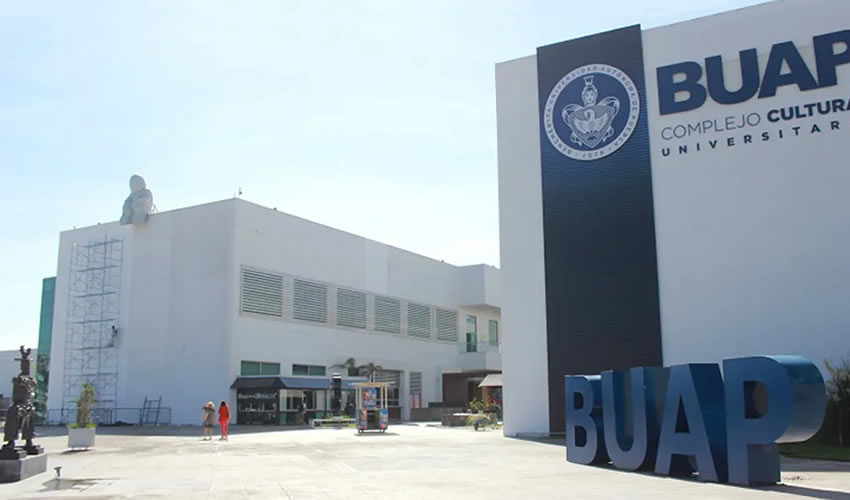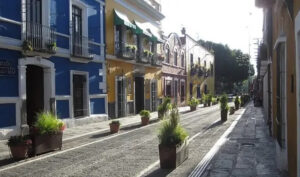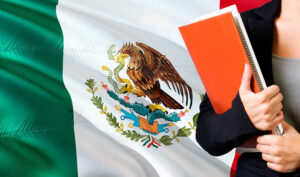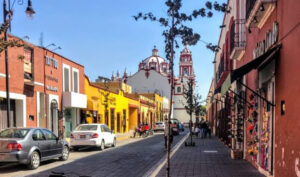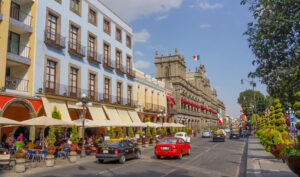The Meritorious Autonomous University of Puebla is the oldest and largest university in Puebla, Mexico. Founded on 15 April 1578 as Colegio del Espíritu Santo, the school was sponsored by the Society of Jesus during most of the Spanish colonial era before turning into a public college in 1825 and eventually into a public university in 1937.
The religious origins can be seen in many of BUAP’s buildings in Puebla city center, which were once colonial-era churches.
The flagship campus is located in the city of Puebla, although more than nine facilities are distributed across the state. Currently, it is one of the 105 institutes participating in the Alice Experiment at CERN.
The university was founded as a Jesuit college under the name Colegio del Espíritu Santo in 1578 and ran until the expulsion of the order in 1767. It then became the Real Colegio Carolino in 1790, after a period when the buildings were used for diverse purposes, including a military barracks.
History: The early days (1578-1790)
On April 14, 1578, the Puebla City Council requested the Jesuit provincial to found an educational institution. On May 9 of the same year, the religious took up residence in this city. Almost with his arrival and in a specially adapted building, the courses began around 1579, with about 20 students, and the institution received the name of San Jerónimo.
Around 1585 the intention of Melchor de Covarrubias, a merchant and military man, was already mentioned. , to found a new school and endow it with 2,000 pesos per year from the time to 14 years.
On April 15, 1578, the public deed of foundation of the Colegio del Espíritu Santo was signed by Covarrubias and Father Antonio de Mendoza, provincial of the Jesuits, before the notary Melchor de Molina.
The new institution received that name due to the devotion of its benefactor, who also designated its patronal feast to be the day of Santa Magdalena.4 This time is difficult to refer to on a level historical, given that a part of the archive’s collection was lost in the 19th century due to an explosion of a powder magazine nearby.
Around 1592, when Covarrubias died, the school received part of his inheritance, 40 thousand pesos and silver tableware that would be used in the refectory of the religious.
Once the school was founded, the construction of its temple proceeded, 5 attributed to Juan López de Arbaiz and a copy of the plan of whose construction is preserved in the French National Library.
This temple detached itself from the style of the 16th-century monastic constructions towards a more Spanish style, based on more rectangular shapes and distributed, in this case, in four different patios.
This temple was dedicated in 1600, and its sacristy is preserved. Due to the high influx of the temple, in the 18th century, it was proposed to demolish it and build a new, larger one, which was started by H. Juan Gómez and finished by the master-builder José Miguel de Santamaría around 1767.
A period of splendor of this institution was cut short by the expulsion of the Jesuits from the Spanish Empire in 1767,5 and 61 religious of the company were expelled from this college. The college was given to the secular clergy and entrusted to Francisco Fabián y Fuero, then bishop of Puebla.
When the Jesuits returned to Mexico in 1820, they once again took over the running of the college as the Real Colegio del Espíritu Santo, de San Gerónimo y San Ignacio de La Compañía de Jesús, which on Mexican independence the following year became the Imperial Colegio de San Ignacio, San Gerónimo y Espíritu Santo.
In 1825 it was removed from the control of the church authorities and taken under state control, becoming the Colegio del Estado, although the rectors continued to be priests.
On 4 April 1939, the college was raised to a university as Universidad de Puebla. However, it was not until almost twenty years later that it gained autonomy from government control as Universidad Autónoma de Puebla under legislation passed on 23 November 1956. It was renamed Benemérita Universidad Autónoma de Puebla in 1987.
Organization
The institution’s motto is: “Pensar bien para vivir mejor” (“To think well, so as to live better”).
Its logo features a phoenix bird in a shield. On the top of the shield, the Greek goddess of knowledge, Athena, is located.
The use of the word autonomous means that, as a public university, it receives funds from the government. However, the university is free to arm and to change the programs in the university considering it necessary.
Campus
As a public university, the BUAP has several campuses located throughout the state to satisfy the students. In Puebla City, there are four main zones in which the BUAP operates: the “Área Centro”(Center Area), located in downtown Puebla and featuring many colonial-era buildings.
The University City, located in the Southeast zone in Puebla city, and it is where the main headquarters of the BUAP are; the “Área Salud” (Health Area), which includes the University Hospital; and the “Angelópolis Area” (Angelopolis Area), which is the newest and features the University’s Cultural Complex. Along with them, the university is responsible for six high schools in Puebla city.
Along with them, the University has nine regional sections which operate in some of the biggest cities in Puebla State, and are: Acatzingo, Atlixco, Chiautla, Chignahuapan, Cuetzalan, Libres, Tehuacán, Tetela de Ocampo and Zacapoaxtla.
Finally, the BUAP has three “foreign academic units”, which act almost autonomously, located in the cities of Tecamachalco, La Magdalena Tlatlauquitepec, and Teziutlan.

